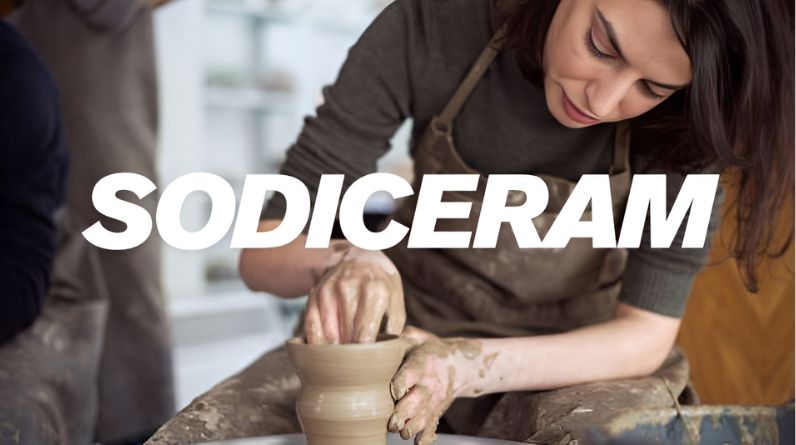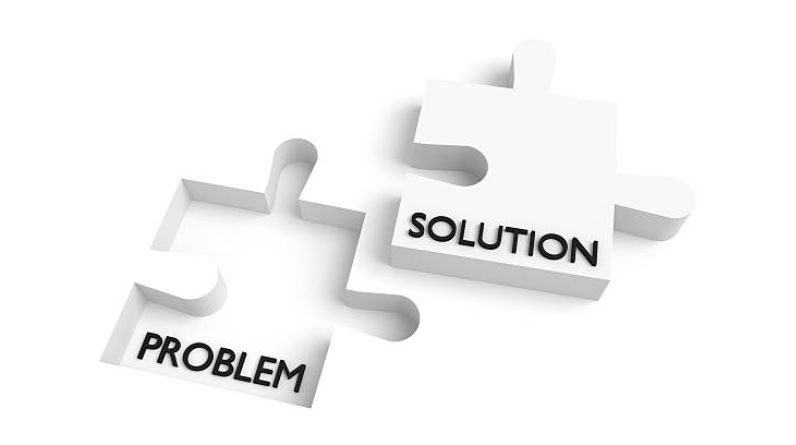
Sodiceram: The Revolutionary Ceramic Technology Reshaping Modern Design and Industry
The ceramics industry stands at the threshold of a groundbreaking transformation, driven by an innovative material that merges ancient craftsmanship with cutting-edge chemistry. Sodiceram represents more than just another ceramic variant—it embodies a fundamental shift in how we conceptualize, manufacture, and utilize ceramic materials in the 21st century. By integrating sodium-based compounds into ceramic formulations, this advanced material addresses longstanding limitations while opening unprecedented possibilities across multiple sectors.
Understanding Sodiceram: The Science Behind the Innovation
At its core, sodiceram leverages the unique properties of sodium-based compounds to enhance traditional ceramic matrices. Unlike conventional ceramics that rely primarily on clay, silica, and alumina, sodiceram incorporates sodium compounds that fundamentally alter the material’s behavior during manufacturing and end-use applications.
The Chemical Advantage
The integration of sodium into ceramic structures creates several chemical and physical advantages:
- Enhanced Vitrification: Sodium compounds lower the melting point of ceramic materials, enabling more efficient firing processes at reduced temperatures
- Reduced Porosity: Improved densification during sintering creates ceramics with fewer microscopic voids and enhanced structural integrity
- Superior Bonding: Sodium facilitates better intergranular bonding, resulting in materials that resist fracturing under stress
- Thermal Stability: Lower thermal expansion coefficients minimize cracking when exposed to temperature fluctuations
These chemical modifications translate directly into practical benefits that extend far beyond laboratory settings, making sodiceram a compelling choice for diverse applications.
Key Benefits: Why Industries Are Embracing Sodiceram
1. Environmental Sustainability
Perhaps the most compelling advantage of sodiceram lies in its environmental profile. Traditional ceramic production consumes substantial energy, with kilns operating at temperatures exceeding 1,400°C. Sodiceram’s reduced firing temperature requirements can decrease energy consumption by 15-25%, translating to significant carbon footprint reductions across the industry.
Additionally, many sodiceram formulations incorporate recyclable materials, creating a more circular production model that aligns with contemporary sustainability mandates.
2. Enhanced Durability and Performance
When compared to conventional ceramics, sodiceram demonstrates remarkable improvements in key performance metrics:
| Property | Traditional Ceramic | Sodiceram | Improvement |
|---|---|---|---|
| Flexural Strength | 50-70 MPa | 85-110 MPa | +40-57% |
| Thermal Shock Resistance | Moderate | High | Significantly Better |
| Stain Resistance | Good | Excellent | Enhanced |
| Water Absorption | 0.5-3.0% | 0.1-0.8% | Up to 75% Lower |
3. Design Versatility
Sodiceram’s unique chemical composition enables manufacturers to achieve effects impossible with traditional ceramics. The material accepts glazes more readily, resulting in richer colors and more lustrous finishes. This characteristic has made it particularly popular in luxury interior design applications where aesthetic differentiation commands premium pricing.
Applications Across Industries: From Homes to High-Tech
Residential and Commercial Architecture
The construction sector has rapidly adopted sodiceram for both structural and decorative applications. Floor tiles manufactured with sodiceram technology demonstrate exceptional resistance to foot traffic, making them ideal for commercial spaces like shopping centers and airports. In residential settings, homeowners appreciate the material’s ability to maintain its appearance despite years of use.
Example: A Barcelona café owner reported that sodiceram tiles in their high-traffic entrance area showed minimal wear after three years, whereas previous conventional tiles required replacement within 18 months.
Automotive and Aerospace
High-performance industries have discovered sodiceram’s potential in extreme environments. The material’s thermal stability makes it suitable for:
- Heat shields in automotive exhaust systems
- Thermal barrier coatings in jet engines
- Insulation components in spacecraft
- Brake system components requiring heat dissipation
Electronics and Technology
The electronics industry values sodiceram for its excellent electrical insulation properties combined with thermal conductivity. Substrates and insulators made from sodiceram enable more compact device designs while managing heat effectively—a critical requirement as electronics continue miniaturizing.
Healthcare and Medical Devices
Sodiceram’s biocompatibility has opened opportunities in medical applications. Dental ceramics benefit from the material’s strength and natural appearance, while surgical instruments utilize its ability to withstand repeated sterilization cycles without degradation.
The Smart Ceramics Revolution: Technology Integration
An emerging dimension of sodiceram involves integrating smart technologies directly into ceramic structures. This convergence of materials science and electronics creates ceramics capable of:
- Environmental Response: Sensors embedded within sodiceram tiles can monitor temperature and humidity, enabling building management systems to optimize HVAC performance
- Adaptive Properties: Some formulations can modify their thermal conductivity based on ambient conditions, improving energy efficiency
- Interactive Surfaces: When combined with conductive elements, sodiceram can create touch-sensitive surfaces for architectural applications
- Health Monitoring: In healthcare settings, smart sodiceram surfaces can detect contaminants or monitor sterilization effectiveness
This technological evolution positions sodiceram at the intersection of materials science, electronics, and the Internet of Things (IoT), suggesting applications we’re only beginning to imagine.
Manufacturing Considerations: Challenges and Solutions

Production Complexity
While sodiceram offers numerous advantages, manufacturing requires specialized knowledge and equipment. Sodium compounds demand careful handling due to their reactivity, necessitating controlled atmospheric conditions during certain production stages. This complexity can increase initial capital investment for manufacturers transitioning from conventional processes.
Cost-Benefit Analysis
Initial production costs for sodiceram typically exceed traditional ceramics by 20-35%. However, comprehensive lifecycle analysis reveals favorable economics:
- Reduced energy consumption during manufacturing
- Extended product lifespan reducing replacement frequency
- Lower maintenance requirements
- Premium pricing potential for high-performance applications
For many applications, the total cost of ownership favors sodiceram despite higher upfront expenses.
Future Horizons: What’s Next for Sodiceram?
3D Printing and Additive Manufacturing
Researchers are developing sodiceram formulations compatible with ceramic 3D printing technologies. This convergence could revolutionize manufacturing by enabling:
- Complex geometries impossible with traditional molding
- Rapid prototyping for custom applications
- On-demand production reducing inventory costs
- Personalized products tailored to individual specifications
Nano-Enhanced Formulations
The next generation of sodiceram may incorporate nanomaterials to achieve even more remarkable properties. Early research suggests that nano-enhanced sodiceram could offer self-cleaning surfaces, antimicrobial properties, or enhanced optical characteristics.
Sustainable Sourcing Initiatives
As environmental consciousness grows, manufacturers are exploring bio-based sodium sources and recycled materials to further improve sodiceram’s sustainability profile. Some companies aim to achieve carbon-neutral production within the next decade.
Making the Switch: Is Sodiceram Right for Your Project?
When evaluating sodiceram for specific applications, consider these factors:
- Performance Requirements: Does your application demand superior strength, thermal resistance, or durability that justifies premium pricing?
- Environmental Goals: Are sustainability metrics important to your organization or customers?
- Aesthetic Considerations: Will the enhanced visual properties of sodiceram provide competitive advantage?
- Lifecycle Costs: Can you evaluate total ownership costs rather than just initial purchase price?
- Technical Support: Does your supplier offer expertise in working with this advanced material?
Conclusion: The Ceramic Renaissance
Sodiceram represents far more than an incremental improvement in ceramic technology—it signals a fundamental reimagining of what ceramic materials can achieve. By addressing traditional limitations while introducing capabilities previously unattainable, sodiceram is establishing new benchmarks across industries from construction to healthcare, from consumer products to aerospace.
As manufacturing processes mature and costs continue declining, sodiceram’s adoption will likely accelerate. The integration of smart technologies adds another dimension, positioning these materials at the forefront of the Internet of Things and responsive built environments.
For designers, engineers, and decision-makers, understanding sodiceram is no longer optional—it’s essential for remaining competitive in industries where material performance, sustainability, and innovation determine success. The ceramic renaissance is here, and sodiceram is leading the transformation.
Whether you’re renovating a home, designing commercial spaces, or developing advanced industrial components, sodiceram deserves serious consideration. Its unique combination of enhanced performance, environmental responsibility, and design flexibility makes it a material truly suited for the challenges and opportunities of the 21st century.













Leave a Reply
You must be logged in to post a comment.